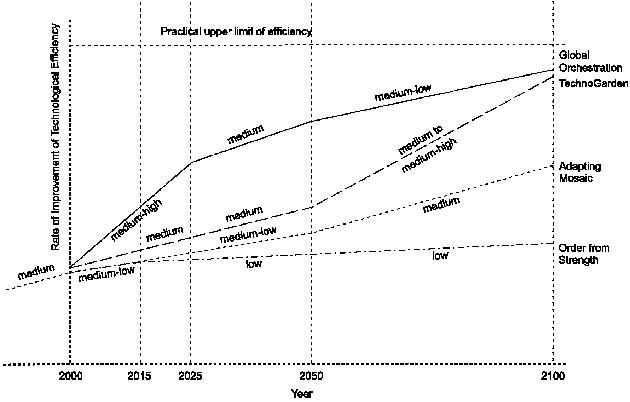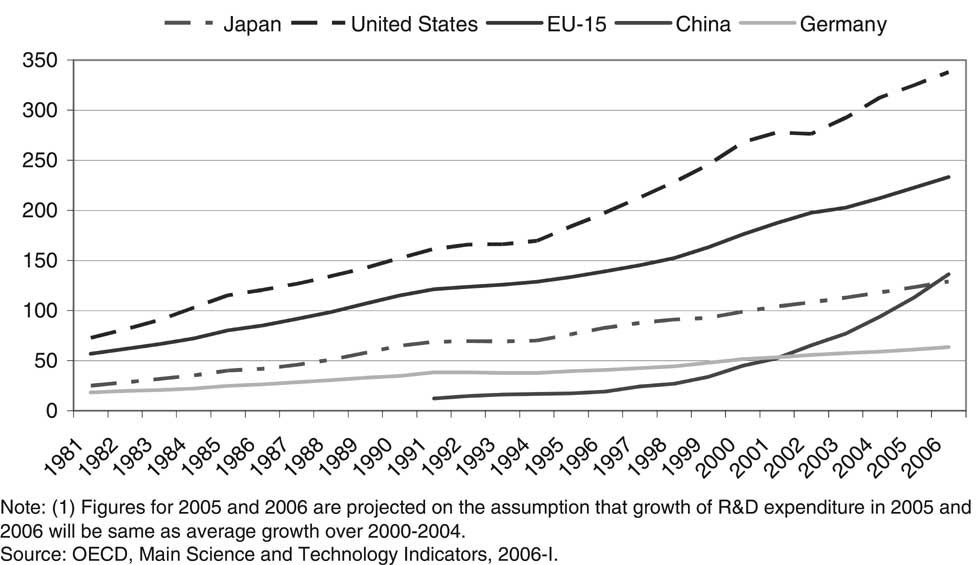
Figure 4-10. Global trends of technological efficiencies in MA scenarios. Source: Alcamo et al., 2005.
Note: Technological efficiency refers, for example, to the conversion efficiency of power plants, or the yield of all crops per hectare.
The Global Environment Outlook report (GEO 3) (UNEP, 2002), focused on the distribution of benefits and costs of technological developments in the future. To the extent that technological innovation is increasingly undertaken by the private sector and driven by profit, benefits are seen as primarily accruing to those who are most powerful in the marketplace. The assessment suggests that cautious government policies and empowerment of consumers may act as disincentives to technological innovation by the private sector. However, such an approach may also result in more equitable distribution of benefits. The quantitative assumptions resemble those of the IPCC-SRES scenarios.
4.3.4.2 Important trends for the future
Trends in investment. Although the innovation process is complex, investment in research and development is central. Typically, the ratio of R&D expenditures to GDP is an indicator of the intensity of R&D activities over time and in relation to other economies. OECD nations typically spend
2.26% of their GDP in overall R&D while Nicaragua can afford to spend only 0.07%.
While there is an increase in absolute R&D expenditures in agriculture, there is a concern that investment in agricultural R&D is declining in North America, Western Europe and East Asia relative to overall spending on research. While existing scenarios are not explicit on agricultural R&D trends, a plausible trend could be a further increase in absolute numbers but a decreasing ratio compared to overall GDP leading to concerns about the ability to use AKST as a response to challenges. However, several trends in R&D investment could mitigate these concerns. First, there appears to be a trend toward increasing globalization of R&D, driven by multinational corporations seeking to take advantage of knowledge of local and regional markets, technical expertise, fewer restrictions on intellectual property, and lower costs for R&D in non-OECD countries. Secondly, many countries with large public sector R&D investments continue to promote international linkages, and this emphasis is likely to become more significant as globalization continues (OECD, 2006b). Thirdly, and perhaps most importantly, China, with a very large, poor, rural population, now ranks second in R&D expenditures (Figure 4-11). It is plausible that China will shortly become the major center for agricultural research, particularly research relevant to poor rural areas. (A more detailed discussion of investment in agricultural R&D is presented in chapter 8.)
Trends in performing sector. In the last century, key innovators were national agricultural research systems, including universities, agricultural field stations, agricultural input companies, and extension services (Ruttan, 2001). Two international organizations, CIMMYT in Mexico and IRRI in the Philippines, contributed significantly to the advancement of the Green Revolution, and were mainly funded by the public sector in the first half of the last century. In contrast, in the United States, the private sector has always played a central role in the development of agricultural equipment and the performance of agricultural research and development. Private-sector research grew substantially in the last decades of the 20th century as legal rights were
